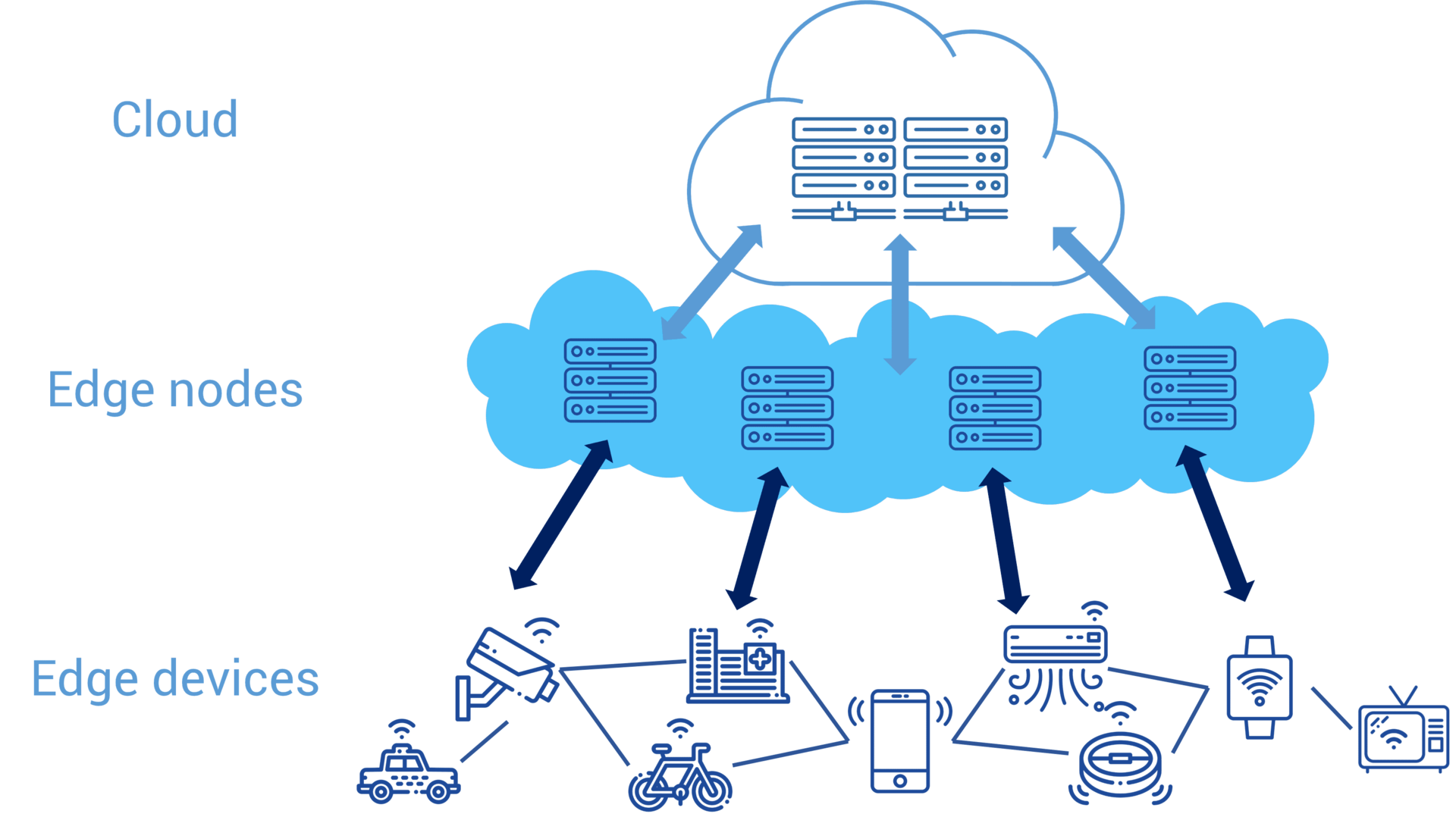What new : edge computing 101

The world of technology is constantly changing and evolving, and one of the latest developments is edge computing. This innovative approach to data management is quickly becoming a strategic imperative for businesses around the globe. With its ability to deliver low latency and faster processing times than traditional cloud computing, it’s no wonder that the edge computing market is projected to reach a value of US$7 billion by 2024.
Edge Computing: A New Frontier
Edge computing is a decentralized data processing architecture that brings computing power closer to the source of data. Unlike traditional cloud computing, which relies on remote data centers, edge computing allows for real-time data processing and analysis right at the edge of the network. This is particularly useful for applications that require low latency, such as autonomous vehicles, industrial automation, and augmented reality.

The Benefits of Edge Computing
There are a number of benefits to using edge computing in your business operations. By bringing computing power closer to the source of data, you can reduce latency and improve data processing times. This can enhance the performance of your applications and give you a competitive edge in your industry.
Edge computing also enables real-time data analytics, which can help businesses make faster and more informed decisions. With the ability to process data on the spot, you can identify trends, identify anomalies, and optimize operations in real-time. This can lead to significant cost savings and improved efficiency.
Another benefit of edge computing is improved security. By processing data at the edge of the network, you can reduce the risk of data breaches and cyber attacks. This is particularly important for businesses that handle sensitive or confidential data.
The Rise of Edge Computing
The edge computing market is projected to experience massive growth in the coming years. According to a recent report by MarketsandMarkets, the market is expected to reach a value of US$7 billion by 2024. This growth is being driven by a number of factors, including increased demand for real-time data processing, the proliferation of IoT devices, and the need for low latency in applications such as autonomous driving.

Real-World Applications of Edge Computing
Edge computing has a wide range of applications across a variety of industries. Here are just a few examples:
Autonomous Vehicles
Autonomous vehicles rely on real-time data processing to operate safely and efficiently. With edge computing, vehicles can process data on the spot and make decisions in milliseconds. This enables more precise navigation, better obstacle avoidance, and faster response times.
Industrial Automation
Industrial automation requires real-time data processing to optimize operations and reduce downtime. With edge computing, sensors and machines can communicate with each other in real-time, enabling more efficient and cost-effective operations.
Agriculture
Edge computing can be used in agriculture to optimize crop yields, reduce water consumption, and better manage pest control. Sensors can collect data on soil moisture, temperature, and other factors, and process it in real-time to enable optimal growing conditions.
Challenges of Edge Computing
While edge computing offers many benefits, there are also a number of challenges to consider. One of the biggest challenges is the lack of standardization in the industry. With so many vendors and technologies to choose from, it can be difficult for businesses to select the right solution for their needs.
Another challenge is the complexity of edge computing architecture. With a decentralized approach to data processing, there are many moving parts that need to work together seamlessly. This can require specialized skills and resources to implement and manage.
Finally, there are security concerns to consider. With data processing taking place at the edge of the network, there is a risk of data breaches and cyber attacks. Businesses need to ensure that they have robust security measures in place to protect their data.
The Future of Edge Computing
Despite the challenges, the future looks bright for edge computing. As the demand for real-time data processing continues to grow, more businesses will turn to edge computing as a solution. This will lead to increased investment and innovation in the industry, driving down costs and making it more accessible to businesses of all sizes.
With its ability to deliver low latency, real-time data analytics, and improved security, edge computing is poised to become a game-changing technology in the years ahead.
Conclusion
Edge computing is quickly becoming a strategic imperative for businesses around the world. With its ability to deliver low latency and faster processing times than traditional cloud computing, it’s no wonder that the edge computing market is projected to reach a value of US$7 billion by 2024. While there are challenges to consider, the benefits of edge computing are clear. Whether you’re in the automotive industry, agriculture, or any other sector that requires real-time data processing, edge computing can help you optimize your operations and gain a competitive edge in your industry.

Source image : finleyusa.com

Source image : www.notebookcheck.net

Source image : www.idginsiderpro.com


